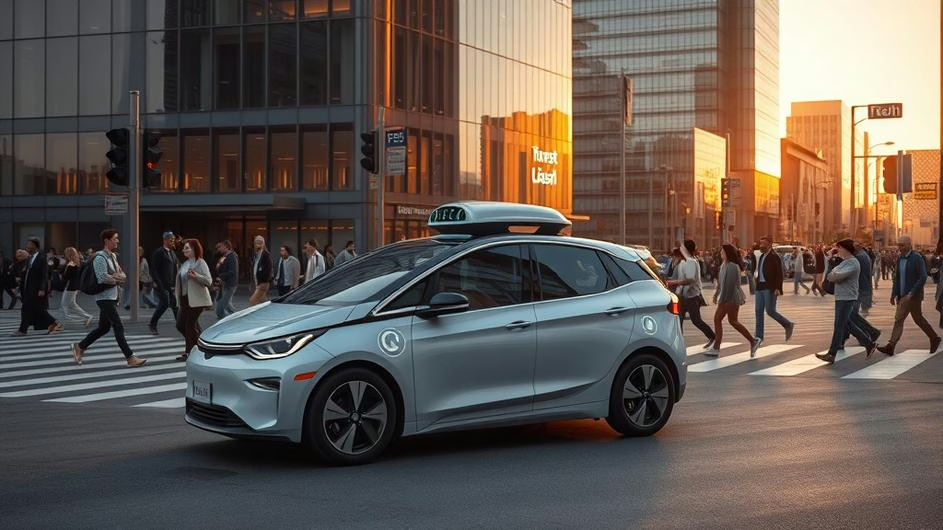
From Smart Search to AI Workforces: How Natural Language Processing and AI Are Redefining Tech Innovation
AI isn’t just another tech buzzword anymore. It’s fundamentally reshaping how we interact with software, from the apps on our phones to enterprise systems managing billion-dollar operations. The most visible change? Natural language processing is making technology actually understand what we’re saying, not just matching keywords.
This shift is happening everywhere. Travel sites, real estate platforms, insurance companies, and customer support teams are all racing to deploy AI that can parse human language and respond intelligently. Recent product launches show we’re past the experimental phase and into real-world deployment.
What does this mean for developers building the next generation of apps? For investors tracking the AI transformation across industries? The implications are massive, and they’re unfolding right now.
Search Gets Smarter: When AI Actually Understands What You Want
Remember typing “cheap hotels New York near subway” into travel sites? That’s about to feel as outdated as dial-up internet. Kayak just launched “AI Mode” that lets you search like you’re texting a friend who knows everything about travel.
Instead of wrestling with dropdown menus and filter combinations, you can type something like “I need a romantic weekend getaway within driving distance of Chicago, somewhere with good food and maybe some outdoor activities.” The AI processes your request, considers your preferences, and serves up options that actually make sense.
This isn’t just convenience. It’s a fundamental shift in how we interact with technology. The system adapts to human communication patterns instead of forcing us to learn its language.
Real estate is seeing the same evolution. Realtor.com rolled out natural language search that understands descriptions like “starter home with a big backyard for kids and close to good schools.” No more checking dozens of boxes or trying to remember if “family-friendly” means the same thing as “good for children.”
For developers, this represents a massive opportunity. Advanced language models are becoming accessible enough that smaller teams can build sophisticated search experiences that would have required Google-level resources just a few years ago.
Enterprise AI: Beyond Chatbots and Into Real Work
While consumer apps grab headlines, the real money is in enterprise automation. Companies are moving past simple chatbots and into AI systems that handle complex workflows.
DXC Technology’s Assure Smart Apps show where this is heading. These aren’t just AI features bolted onto existing software. They’re complete workflow applications designed specifically for insurance companies, built from the ground up with AI at the core.
Insurance might not sound exciting, but think about the complexity involved. Risk assessment, claims processing, regulatory compliance. These are areas where AI can process vast amounts of unstructured data and make decisions that traditionally required human expertise.
The bigger story here is about legacy systems. Most large companies are running on infrastructure that’s decades old. Instead of ripping everything out and starting over, smart AI implementations can layer intelligence on top of existing systems.
Aissist.io is tackling a different but equally important problem: AI pilot projects that fail to scale. How many companies have spent months building an AI customer support system that works great in demos but falls apart when real customers start using it?
Their approach combines different types of AI workers. Digital employees handle routine tasks end-to-end. AI assistants field common questions using natural language. AI managers monitor performance and optimize the whole system. The key insight? You need different AI tools for different jobs, not one system trying to do everything.
AI Tackles Global Challenges: Climate Research Gets Smarter
Here’s where AI applications get really interesting. Researchers published a study in Nature Climate Change that shows how language models can analyze climate policy gaps at a scale that would be impossible for human researchers.
They processed 1,868 documents across 535 World Heritage sites, looking for disconnects between climate awareness and actual implementation. That’s the kind of analysis that would take a team of researchers years to complete manually.
The findings aren’t just academic. Conservation organizations are using these insights to identify where policy and action don’t align, helping them target resources more effectively. This is AI’s transformative potential in action: not replacing human judgment, but augmenting human capacity to tackle complex global problems.
For the tech community, this research demonstrates something crucial. AI isn’t just about making apps more convenient or helping companies cut costs. It’s becoming a tool for addressing challenges that affect everyone.

What This Means for Tech’s Future
We’re seeing the emergence of what you might call “conversational computing.” Technology that understands context, intention, and nuance. This isn’t just about better user interfaces. It’s about fundamentally different relationships between humans and machines.
Developers building in this space need to think beyond traditional user experience patterns. When AI can understand natural language, many of the interface conventions we’ve relied on become unnecessary. Why have a complex form when users can just describe what they want?
For investors, the opportunity is massive but also risky. AI infrastructure and tokenomics are evolving rapidly. Companies that nail the balance between capability and usability will capture enormous value. Those that build impressive demos but can’t scale to real-world complexity will struggle.
The enterprise market is particularly interesting. B2B software has traditionally been clunky and difficult to use because businesses had no choice. When AI makes enterprise software as intuitive as consumer apps, that changes everything.
We’re also seeing the rise of hybrid workforces where AI handles routine tasks while humans focus on strategy, creativity, and relationship management. This isn’t about replacing workers, it’s about augmenting human capabilities with machine intelligence.
The Next Phase: Integration and Scale
The companies succeeding in this space aren’t just building better AI models. They’re solving integration challenges, addressing scalability concerns, and creating systems that work reliably in production environments.
Looking ahead, the boundaries between different types of AI applications will blur. Agentic AI systems that can handle complex, multi-step tasks are moving from research labs into real products.
For anyone building in the tech space, the message is clear: AI isn’t coming, it’s here. The question isn’t whether to incorporate AI into your products, but how to do it in a way that genuinely improves user experience rather than just checking a box.
The winners will be those who understand that AI’s real value isn’t in replacing human intelligence, but in extending it. Creating systems that amplify human creativity, insight, and decision-making while handling the routine work that bogs us down.
Sources
-
“World Heritage documents reveal persistent gaps between climate awareness and local action” – Nature Climate Change, October 13, 2025
-
“DXC Launches Assure Smart Apps to Accelerate AI-Driven Innovation in the Insurance Industry” – Financial Times, October 13, 2025
-
“300+ Search Tags: Realtor.com Launches AI-Powered Search to Find Homes by Natural Language” – Stock Titan, October 9, 2025
-
“Kayak Introduces AI Mode” – Skift, October 15, 2025
-
“Aissist.io Launches Hybrid AI Workforce to Solve AI Pilot Failure for Customer Support Automation” – Digital Journal, October 14, 2025






























































































